pieces of our past are hidden in plain sight (here’s where to look)
Photos by Tina Ecker, Words by Mike Paulus, History by The Chippewa Valley Museum
pieces of our past are hidden in plain sight (here’s where to look)
Photos by Tina Ecker, Words by Mike Paulus, History by The Chippewa Valley Museum
Actual pieces of history are all around you. Scattered throughout the city, they are simply the leftovers of Eau Claire’s architectural heritage, parts of a long gone whole. You can still visit these things, you can still touch them. They are portholes to a different time. Scraps of a ruined photograph. We pass by these things day after day until they generate a kind of ghostly familiarity. They are stuck in our minds as they are stuck in an old brick wall or stranded out there in the woods. We’ve looked at these things for years, but we’ve never really seen them.
Until now.

1. “Shultz” Tilework
Stones Throw, 304 Eau Claire Street
If you peek over the cast iron fence protecting the basement entrance to the Stones Throw, you’ll see the name “SCHULTZ” embedded, all caps, in a small tile floor. Alfred E. Schultz and his brother Oscar operated a barber shop there in 1899 when the building, just five years old, was called the Chippewa Valley Bank Building. Alfred practiced the tonsorial arts there until at least 1916, later moving to Gibson Street. He died in 1936.
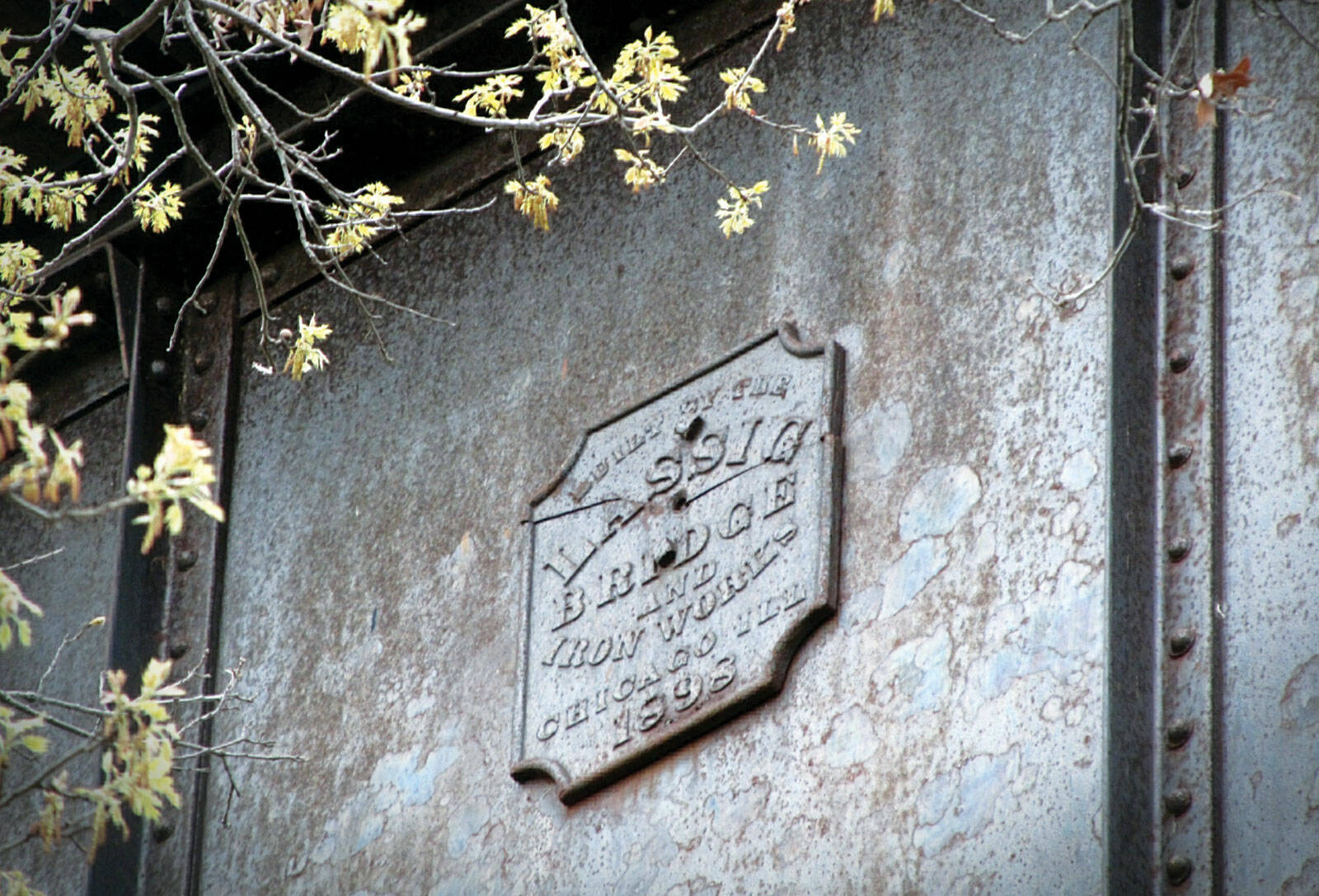
2. Lassig Bridge and Iron Works Plaque
East end of the High Bridge
On the east side of the Chippewa River, where Eau Claire’s High Bridge crosses an access road, tree branches obscure a plaque bolted to the bridge. It reads Made by the Lassig Bridge and Iron Works, Chicago Ill. Lassig added the sections you now see connecting to the riverbank in 1898, but the original iron lattice work at the heart of the bridge was crafted in 1881. All of this iron carried tracks for the “Omaha Road” rail line 900 feet across the water. Abandoned in 1992, it reopened as a pedestrian bridge in 2015.

3. Art Deco Eagle Carvings
US Bank building, corner of Barstow and Gibson Streets
Built in 1930 to house the Union National Bank Company, this building is the only major surviving piece of Art Deco architecture in Eau Claire. Union National Bank was the only bank in town to survive the Great Depression, possibly warded off by its majestic, stylized eagle carvings perched six stories above the sidewalk.
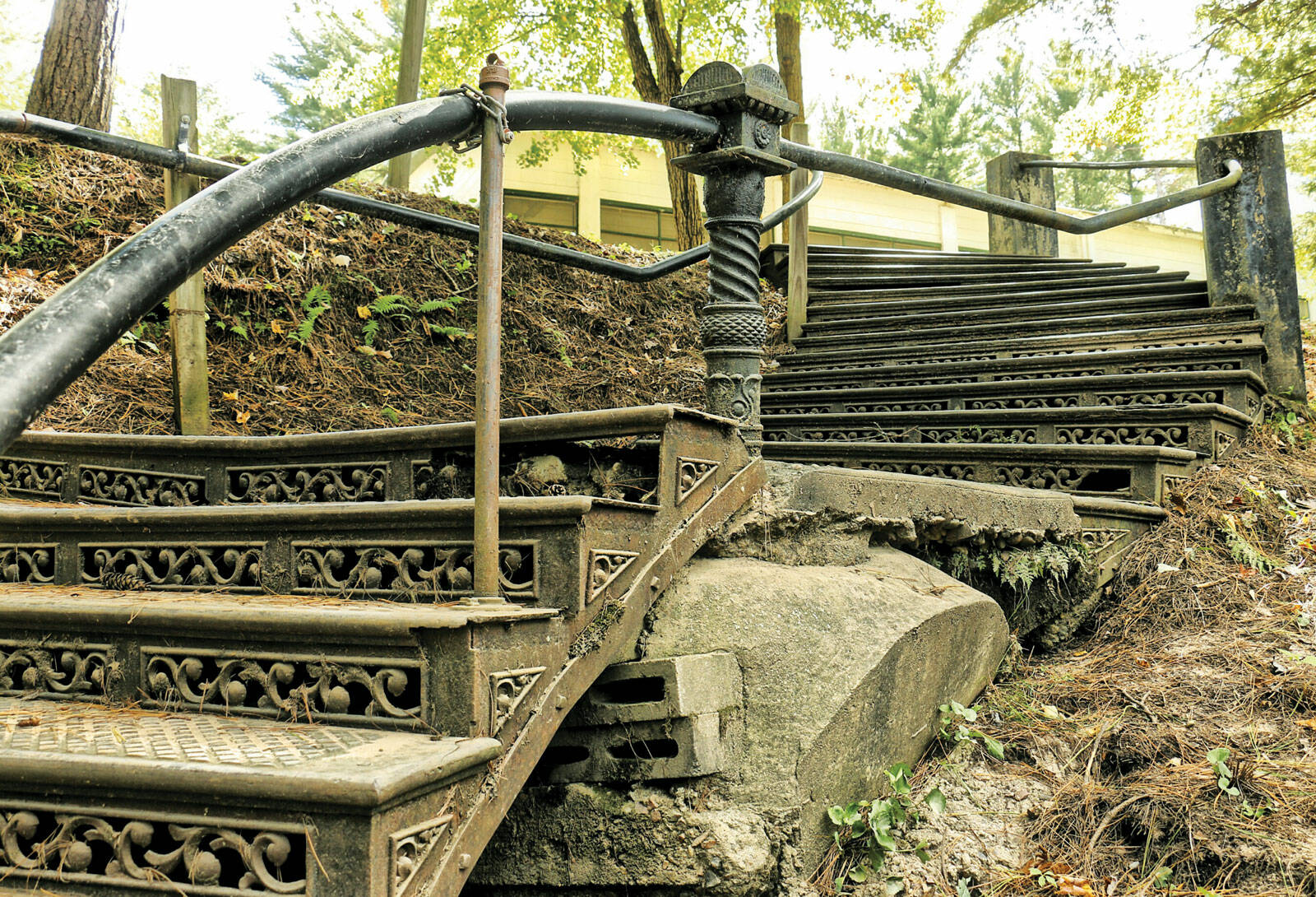
4. Eau Claire County Courthouse Stairs
Lake Eau Claire County Park, behind Clubhouse #8
A pair of curving iron staircases were added to the exterior entrance of the Eau Claire County Courthouse in 1875, and the iron railing (made by Phoenix Manufacturing Company) was added in 1894. During a façade renovation in 1937, County Board chair Will S. Kelly bought and rescued them, repurposing the steps and rail posts in Lake Eau Claire County Park where you can find them today. The courthouse itself was razed in 1973.
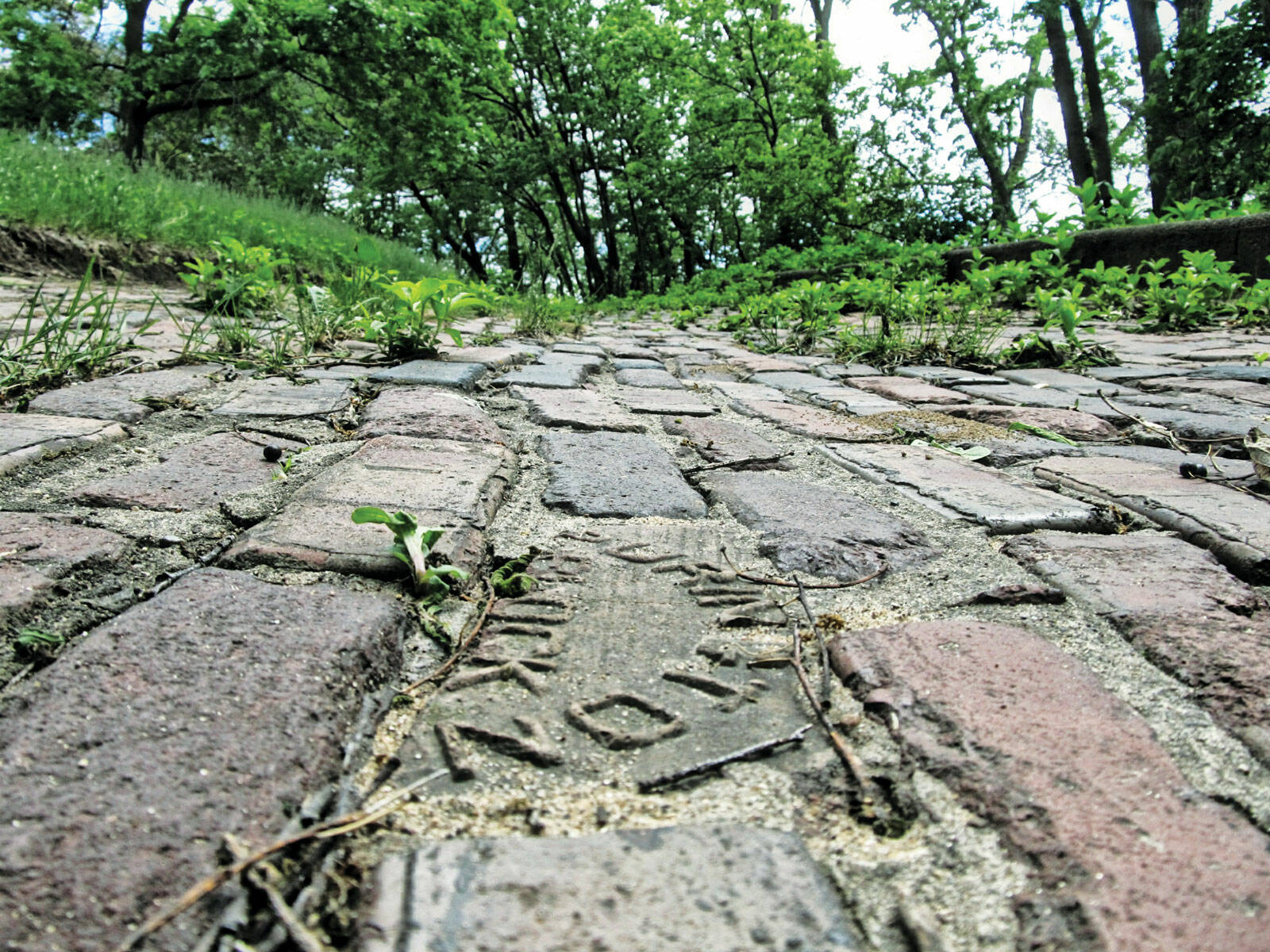
5. Eastside Hill Brick Path
Behind the Park Tower Apartments on S. Farwell Street
A rough road was cut into the steep slope of Eau Claire’s Eastside Hill around 1865. It was paved in 1927 with bricks taken from West Grand Avenue and Barstow Street when those motorways were repaved with concrete. The top of the path is accessible from the end of Newton Street.
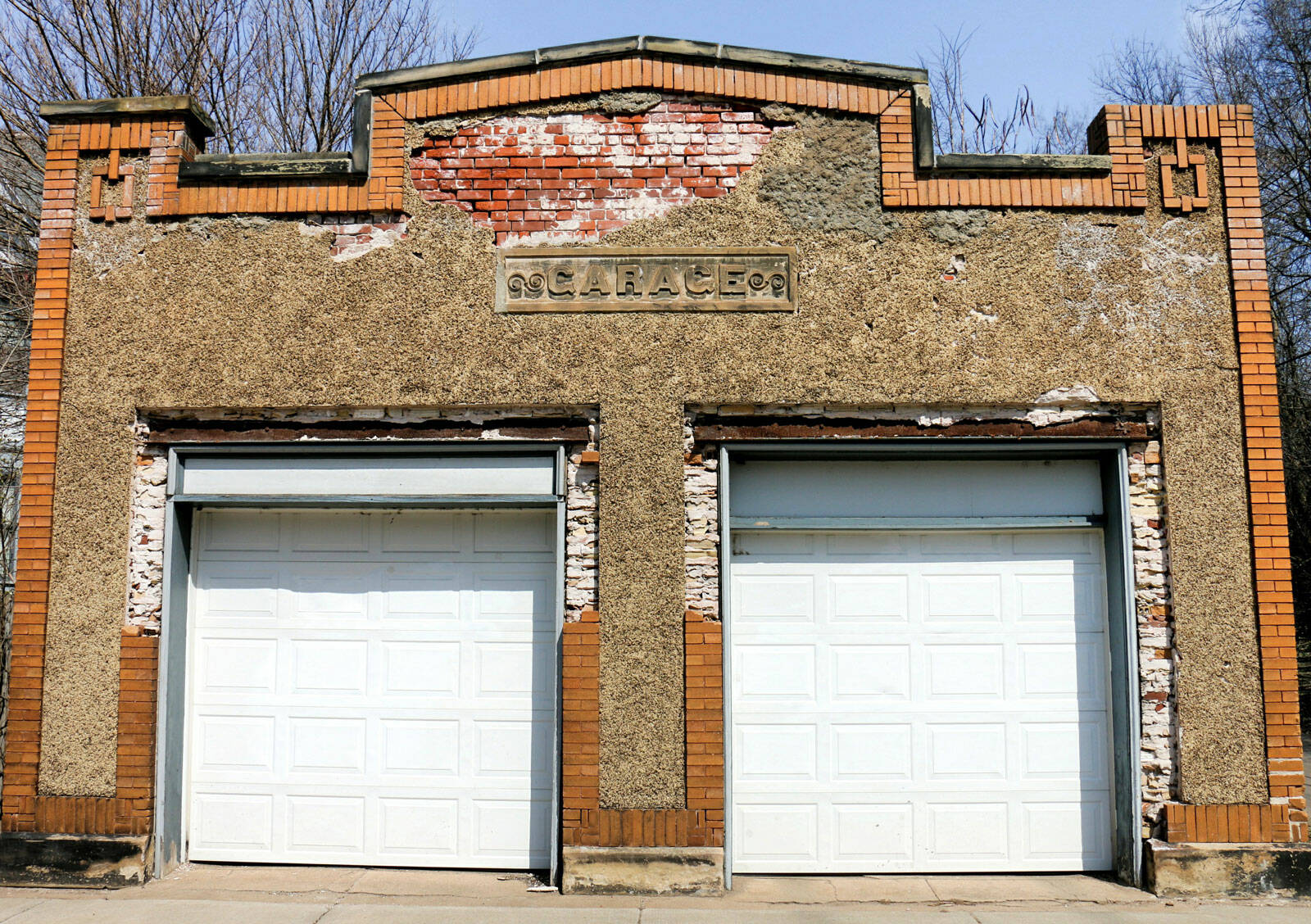
6. Walter Mansion Garage
East end of Oak Street
This stucco covered brick garage with the fancy carving sits next to a fantastic 1897 Queen Anne home built by German immigrant and brewer John Walter at 605 N. Barstow Street. Walter opened what eventually became Walter’s Brewing Company (nearby on Elm Street) in 1889. He died in 1932. We presume the garage was built after the house, as Stucco was a popular building material for garages in the 1910s and later due to its fire resistance.

7. Elevator Bell
Graham Avenue side of downtown Eau Claire’s Barstow Court building
There was a time when people stranded in disabled elevators could push a button causing a bell to ring on the outside of the building at street level. It was then the civic duty of alert passersby to contact the proper authorities.
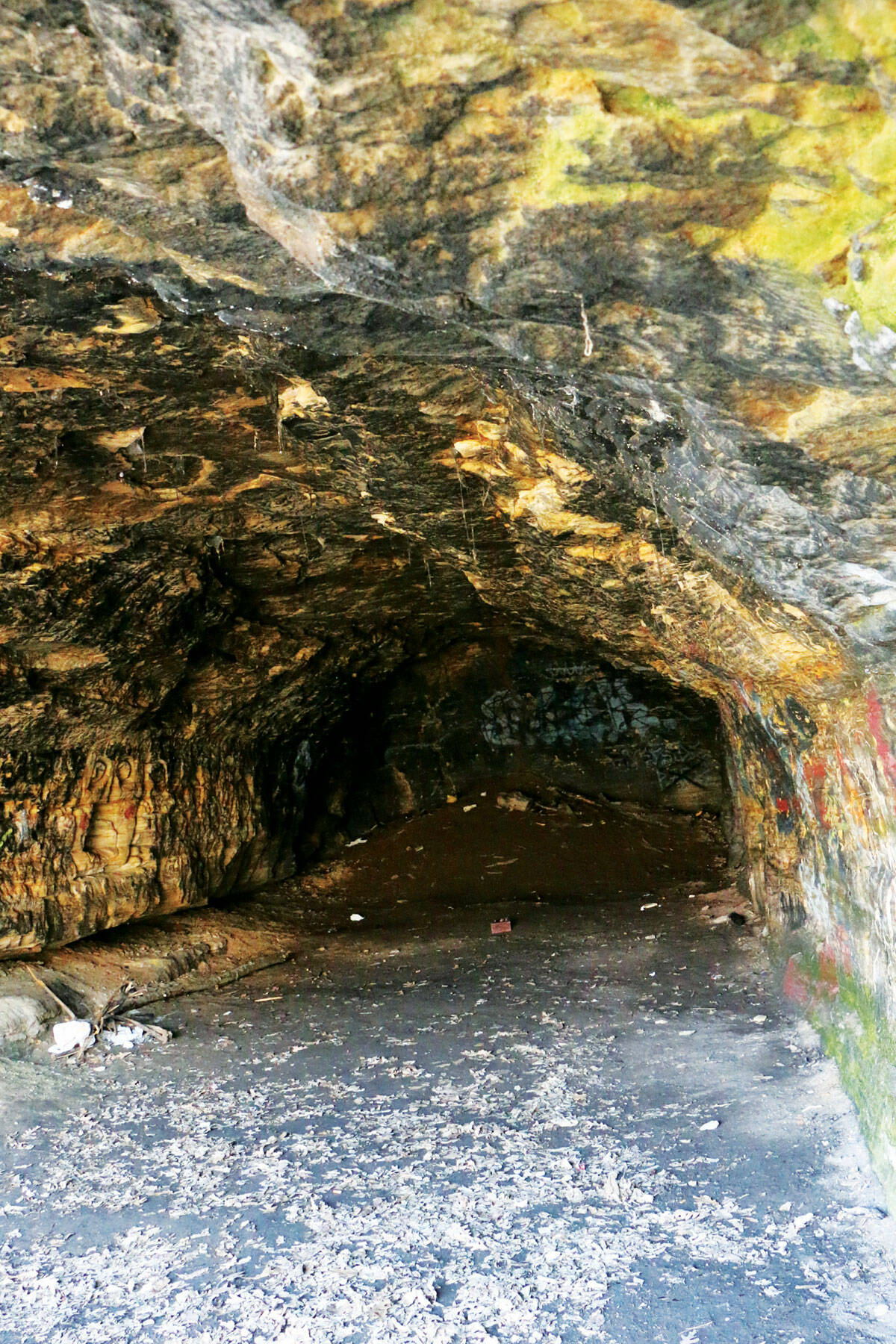
8. Hantzsch’s Cave
Near the south end of the “S Bridge,” across the Eau Claire River from Banbury Place
Twelve feet high at its tallest, the cave was excavated by Robert Hantzsch for his brewery sometime around 1860 and abandoned after Hantzsch lost his operation to a fire in 1870. The cave was famously inhabited by Maude Phillips (aka, the poet Violet Leigh) and her family in 1917.

9. Green Mail Box
Corner of Second Avenue and Fulton Street
This odd mailbox near St. Patricks Church, though mystifying to many, is a “Relay Box.” Once used by carriers to store batches of mail, it saved them a trip to the distribution center (and saved their backs). Eau Claire’s Post Office doesn’t know when this one was installed, when it was abandoned, nor, one can assume, what’s currently inside it.

10. Kaiser Lumber Company Ruins
Along the south end of Half Moon Lake
Rediscovered by generation after generation of local kids and hikers, the mossy concrete ruins of the Kaiser Lumber Company are all that remain of what was once 46 acres of sawmill Shangri-La. The last true lumber company to operate in Eau Claire, Kaiser Lumber milled pinewood on that site into the early 1900s. In 1930, a fire in part of the complex could be seen 30 miles away. The ruins are accessible from the bike trail running behind businesses along Menomonie Street.

11. Train Switch Tower
Carson Park’s mini replica train ride
The tower near Eau Claire’s favorite tiny train was constructed in 1896, just southeast of what is now the Banbury Place complex (built later in 1917). It housed controls for a manual rail switch where the “Milwaukee Road” and the “Omaha Road” rails crossed. The tower functioned until 1991 and was moved to Carson Park in 1992. The Chippewa Valley Railroad Association maintains the tower as it continues to watch over local locomotion, as it has for 120 years.


















